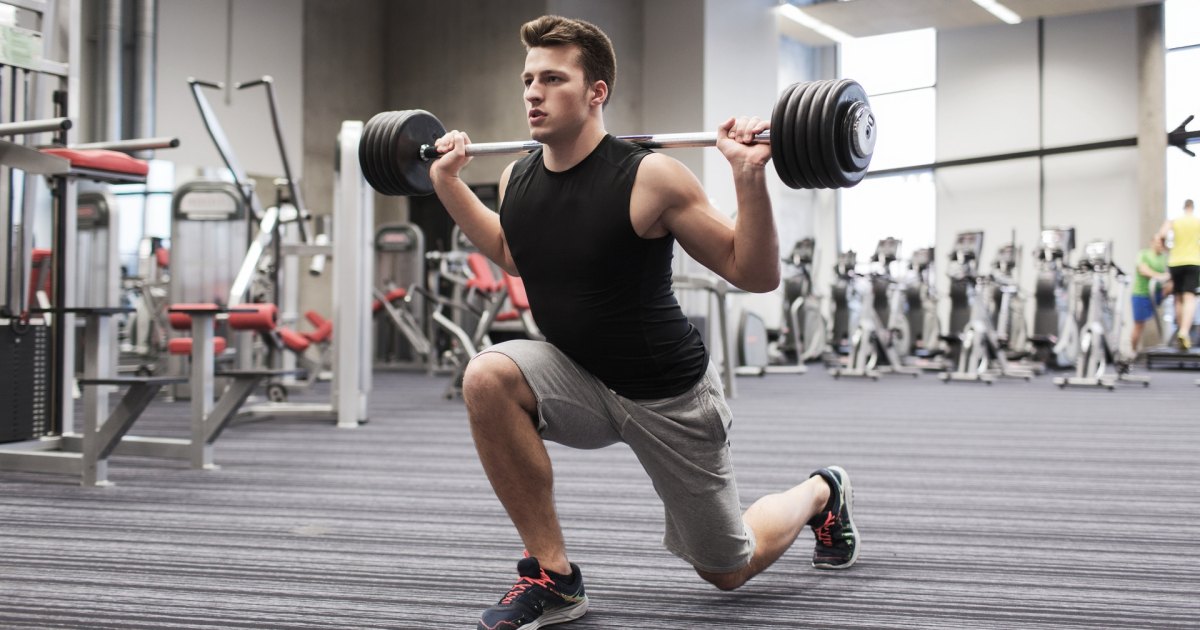No products in the cart.
Fitness Tips
Best Hypertrophy Leg Workout | Men’s Journal
Most people have the same goal when working out: build muscle. But the methods used to achieve that goal can vary widely. To help you get on the right track, it’s a good idea to stick with what works, like a hypertrophy leg workout. Not familiar with the hypertrophy strategy? Here’s a quick primer.
Hypertrophy 101
Any hypertrophy routine requires three key factors in order to deliver gains:
- Volume: This refers to the total number of sets (and cumulative reps) of work the muscle is exposed to in a workout or across several workouts.
- Intensity: The amount of loading a muscle takes on.
- Mechanical Tension: This refers to the muscle spending time under tension throughout its functional range of motion. Doing that requires looking closely at the muscle’s action within the body and prioritizing exercises that challenge the muscle through as much of its range of motion as possible.
For lifters who have a solid fitness foundation, the best way to achieve hypertrophy benefits is to zero in on different body regions with specific workouts tailored to each region, better known as isolation training. Isolation training allows you to spend your entire time in the gym giving one muscle group the pump of its life. Done correctly—and supplemented with a healthy, protein-rich diet complete with a caloric surplus—your body will respond by making the muscle grow.
Here, I’ve applied the hypertrophy workout method to your legs. Read on for the best hypertrophy leg workout, and get ready to grind.
The Best Hypertrophy Leg Workout
- A. Front Squat x 5 (five sets): The front squat has the edge over the back squat when the goal is quad development. Since the weight is on the front of the body, the spine can stay more upright while lifting something heavy (which is why we chose this versus the goblet squat variation, which is great, but typically places a lower ceiling on how much you can lift). A taller spine allows for greater depth, which means more flexion at the knee joint. Since the quads are the body’s knee extensors, front squats will really make them work.
To get the most out of this move, try using 3- to 4-second eccentric (lowering) phases, and rest 2 minutes between rounds. For an added hit to the quads, elevate the heels on plates or wedges. - Note: Perform B1 and B2 as a superset for 3 rounds. Rest 2 minutes between rounds.
- B1. Walking Lunge x 20 strides: In walking lunges, the loading is less important than the execution. You can use a pair of dumbbells, a barbell loaded on the back, or kettlebells held in the rack position. However, the stride is non-negotiable: each one must be long. With each stride, the knee of the trailing leg should descend to just an inch off the ground, and the knees should stay facing straight ahead, without falling in toward the midline. In addition, avoid pausing between steps to ensure complete hip extension.
- B2. Eccentric Nordic Curl x 6: Find a padded surface, like a couple of mats placed on the ground. (This will be for your knees and shins to rest on.) Secure the feet under an immovable object. It’s best if the feet have freedom to move a little bit while the heels are secured. Kneel tall, and set the hands up beside the chest. Bracing with your hamstrings, lower yourself slowly toward the floor. Don’t hinge much at the waist—this is a movement that should change the knee joint angle, not the hip joint angle. Aim for a 4- to 5-second eccentric phase, and land in a pushup position. Assist yourself back to the top (you can use your arms to help), and repeat. This will annihilate your hamstrings.
- Note: Perform C1 and C2 as a superset for 3 rounds. Rest 90 seconds between rounds.
- C1. Dumbbell Romanian Deadlift x 10: We’ve worked the hamstrings in isolation as a knee flexor with the Nordic curls, but they play another important role: Hip extension. Deadlift patterns that involve the hinge at the hip will enforce this, and the RDL is great for accessing this muscle group. Remember: The Romanian deadlift requires straighter knees than a typical deadlift, so keep a flat back and really work to feel a big stretch in the hamstrings on each rep.
- C2. Seated Leg Extensions x 12
- D. Finisher: 2-Minute Leg Press Challenge: This is pretty straightforward: You’re going to leg press for 2 minutes straight. You can rest at any time during the 2 minutes, and the clock always runs. Use a weight that’s comfortably light (a 200-pound, able-bodied man should probably go for 1.5 to 2 plates per side). To emphasize the quads in this challenge, place the feet lower on the platform. It’s OK for the heels to come off the platform a little bit on each rep.
The goal is to perform as many honest, full range of motion reps in this time period, with the least amount of time spent paused. Aim to maximize the number of reps in a row in a given burst. After the first 45 seconds, you’ll definitely feel a burn. Only perform one set of this move, and use it as a way to spike your metabolic demand—and set the tone for the rest of the day.
For access to exclusive gear videos, celebrity interviews, and more, subscribe on YouTube!
Source link

